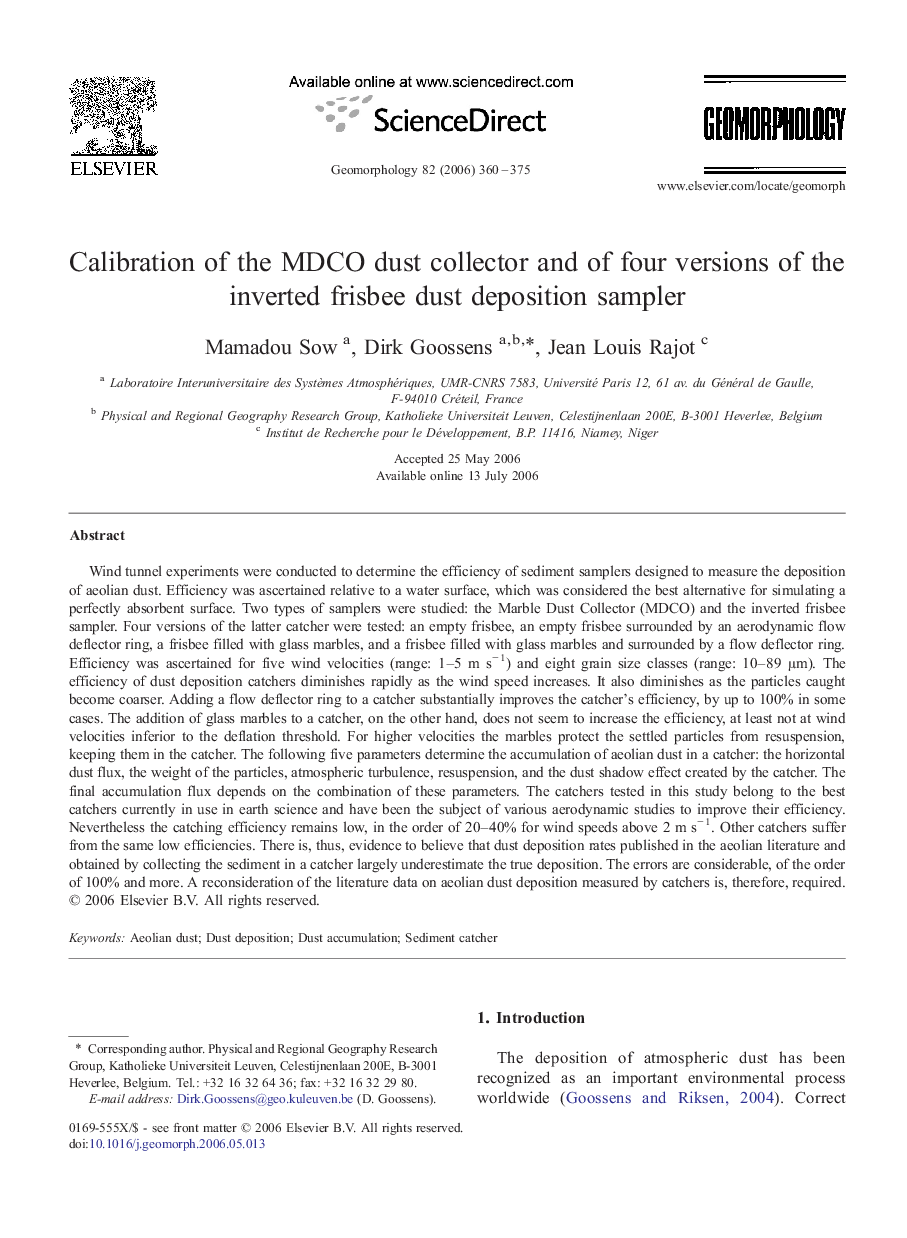| کد مقاله | کد نشریه | سال انتشار | مقاله انگلیسی | نسخه تمام متن |
|---|---|---|---|---|
| 4687299 | 1635587 | 2006 | 16 صفحه PDF | دانلود رایگان |

Wind tunnel experiments were conducted to determine the efficiency of sediment samplers designed to measure the deposition of aeolian dust. Efficiency was ascertained relative to a water surface, which was considered the best alternative for simulating a perfectly absorbent surface. Two types of samplers were studied: the Marble Dust Collector (MDCO) and the inverted frisbee sampler. Four versions of the latter catcher were tested: an empty frisbee, an empty frisbee surrounded by an aerodynamic flow deflector ring, a frisbee filled with glass marbles, and a frisbee filled with glass marbles and surrounded by a flow deflector ring. Efficiency was ascertained for five wind velocities (range: 1–5 m s− 1) and eight grain size classes (range: 10–89 μm). The efficiency of dust deposition catchers diminishes rapidly as the wind speed increases. It also diminishes as the particles caught become coarser. Adding a flow deflector ring to a catcher substantially improves the catcher's efficiency, by up to 100% in some cases. The addition of glass marbles to a catcher, on the other hand, does not seem to increase the efficiency, at least not at wind velocities inferior to the deflation threshold. For higher velocities the marbles protect the settled particles from resuspension, keeping them in the catcher. The following five parameters determine the accumulation of aeolian dust in a catcher: the horizontal dust flux, the weight of the particles, atmospheric turbulence, resuspension, and the dust shadow effect created by the catcher. The final accumulation flux depends on the combination of these parameters. The catchers tested in this study belong to the best catchers currently in use in earth science and have been the subject of various aerodynamic studies to improve their efficiency. Nevertheless the catching efficiency remains low, in the order of 20–40% for wind speeds above 2 m s− 1. Other catchers suffer from the same low efficiencies. There is, thus, evidence to believe that dust deposition rates published in the aeolian literature and obtained by collecting the sediment in a catcher largely underestimate the true deposition. The errors are considerable, of the order of 100% and more. A reconsideration of the literature data on aeolian dust deposition measured by catchers is, therefore, required.
Journal: Geomorphology - Volume 82, Issues 3–4, 15 December 2006, Pages 360–375